My perspective in seeing all these bare stones on my three trips to Ireland has always been historical: I try to learn about the eras when many races and tribes came to Ireland and built new lives and new stone structures. I envisioned how these peoples cut down the ancient forests and turned them into bogs and stony fields. I read about centuries of fighting, famine, colonization, and other events affected the landscape.
But how did the Irish farmers two centuries ago view all this evidence showing centuries of human occupation? They had little historic information, and less understanding of how ancient the neolithic tombs and forts were created. The mysteries of their surroundings created a sense of enchantment. Irish folk tales invented Finn McCool to create the giant's causeway, and imagined races of fairies, wee people, leprechauns (who are originally shoe makers), banshees, and many others to populate these very scary ruins. In their stories, doors would open amidst the stones, old tombs would light up and songs would sound into nighttime darkness, and the old castles would come to life with ethereal people who couldn't be seen in daylight.
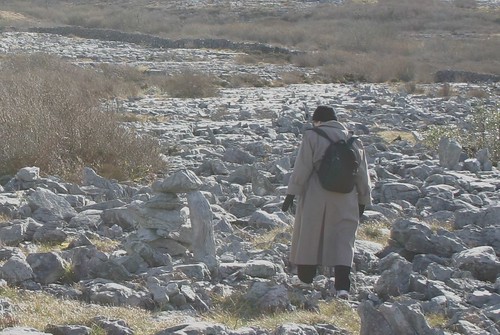
Neolithic stones, photo from our 2005 trip.
In reading William Butler Yeats's Irish Fairy and Folk Tales, I'm getting a much more vivid picture of how the fairies live. In one story, a man named Lusmore was walking slowly home one night, when "he came to the old moat of Knockgrafton, which stood on the right-hand side of his road." A moat is a neolithic tomb, such as I saw on my trip.
"Tired and weary was he, and noways comfortable in his own mind at thinking how much farther he had to travel, and that he should be walking all the night; so he sat down under the moat to rest himself, ... Presently there rose a wild strain of unearthly melody upon the ear of little Lusmore; he listened, and he thought that he had never heard such ravishing music before. It was like the sound of many voices, each mingling and blending with the other so strangely that they seemed to be one, though all singing different strains, and the words of the song were these--"Da Luan, Da Mort, Da Luan, Da Mort, Da Luan, Da Mort;"when there would be a moment's pause, and then the round of melody went on again. ... The fairies within Knockgrafton, for the song was a fairy melody ... " -- The Legend of Knockgrafton
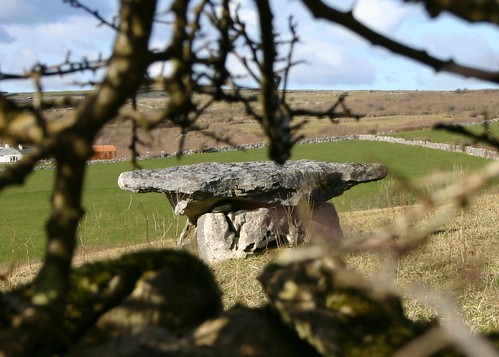
Another neolithic tomb in The Burren, from our 2005 trip
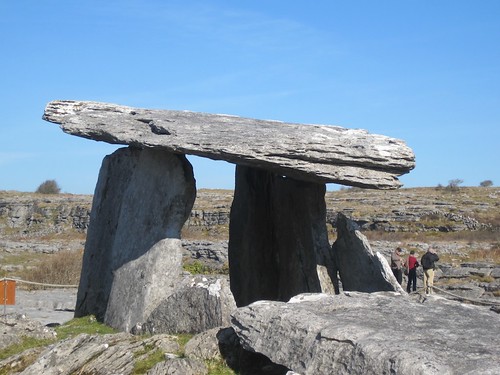
Poulnabroe, a well-preserved neolithic portal tomb

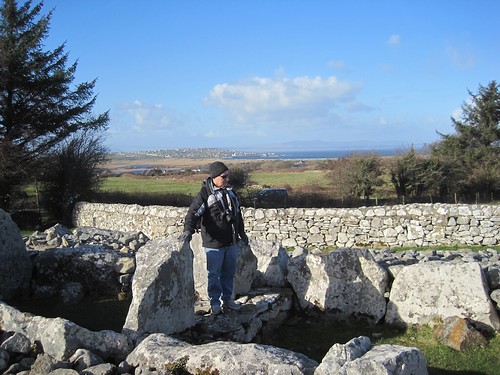
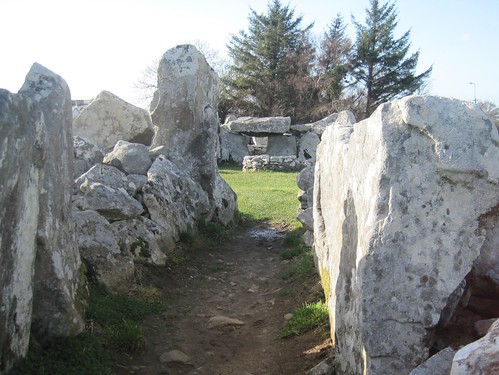
One more portal tomb, north of Sligo, 2011
Castles such as the ones we saw were also homes for fairies; from the tale of a young man:
"An old ruined castle, about a quarter of a mile from his cabin, was said to be the abode of the 'wee folk.' Every Halloween were the ancient windows lighted up, and passers-by saw little figures flitting to and fro inside the building, while they heard the music of pipes and flutes. It was well known that fairy revels took place; but nobody had the courage to intrude on them." -- Jamie Freel and the Young Lady
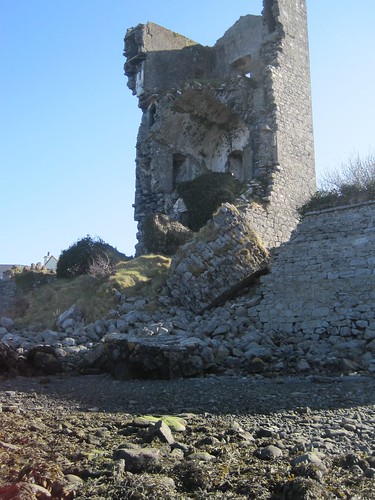
If fairies or pookas come here now, they disturb the residents of the just-visible adjacent housing development!
1 comment:
What a thoughtful (and informative) post. I am quite certain fairies live at my lake up north, but I'm less certain about at home. A tad too busy and less magical, I think.
Post a Comment